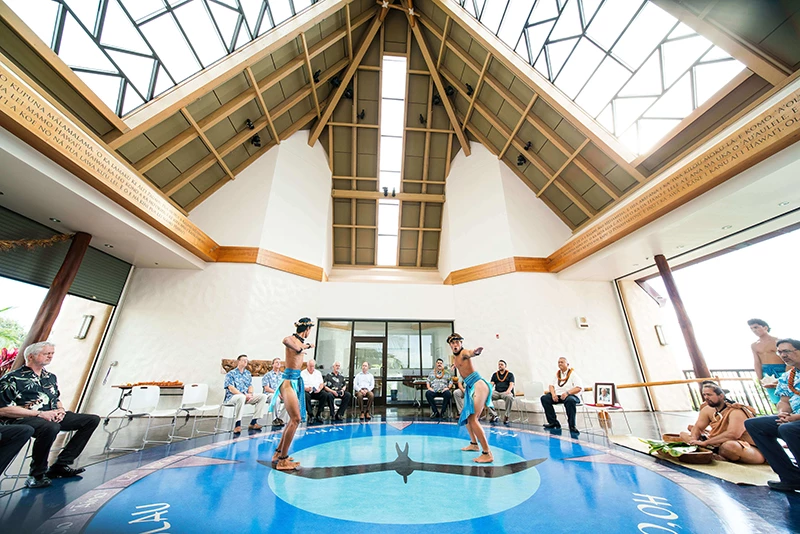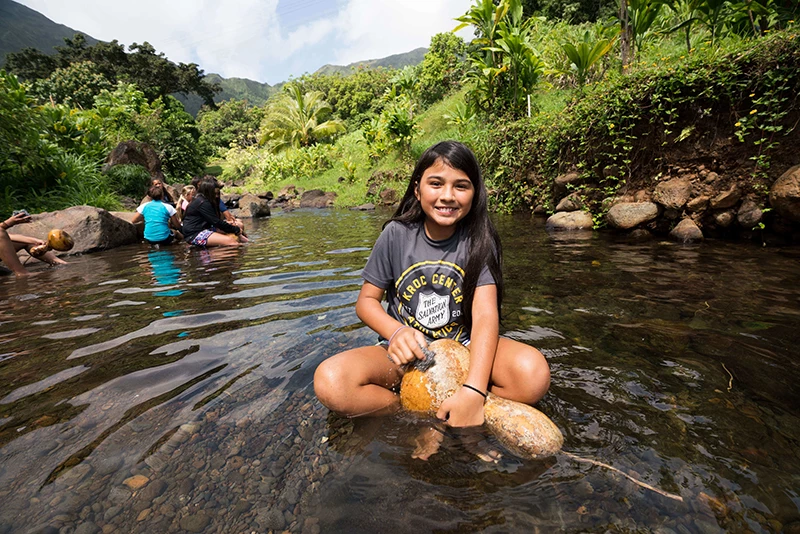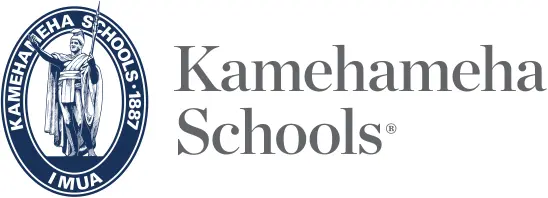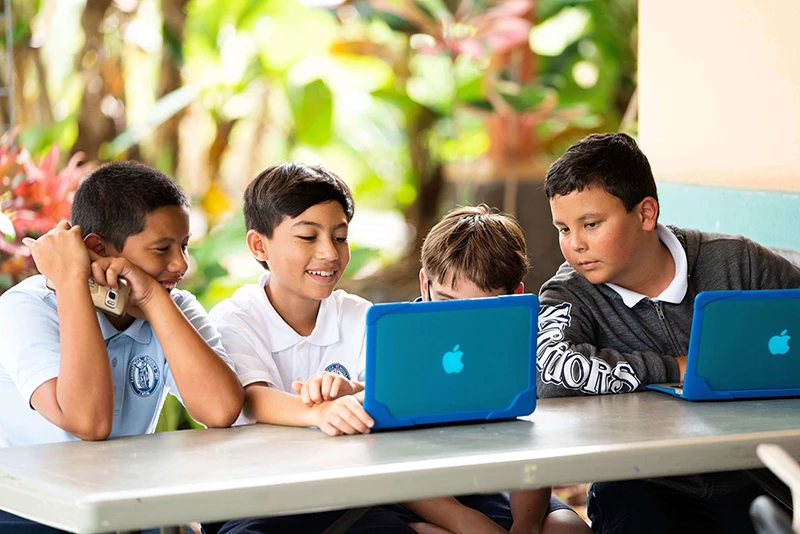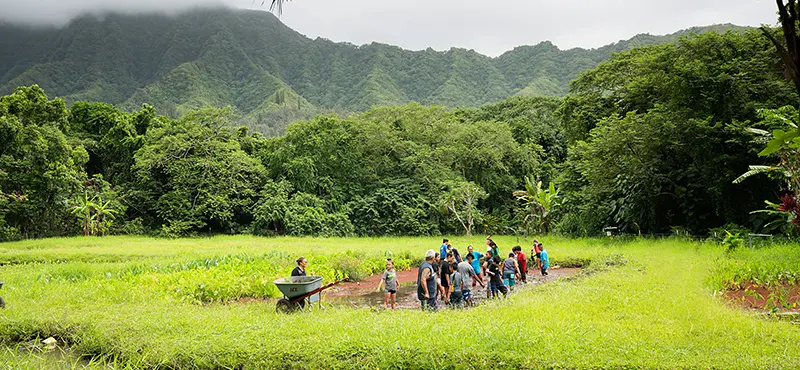During a class huakaʻi to Lahaina in February, Kamehameha Schools Maui junior Kahoa Kapuaʻala scooped dirt away with her hands to make way for a young ʻaʻaliʻi to be planted in the soil of Kuʻia.
“Being able to contribute and feel more connected to the land is something that I’m very proud of,” Kapuaʻala said. “After we leave today, I’m going to feel accomplished knowing that I helped not only restore the land but also contributed to the revitalization of our culture and planted native species – some that are very sacred and scarce.”
“It’s just been a really fun experience.”
Kapuaʻala was one of about 15 haumāna and three kumu who made the first school trip out to Kuʻia to kākoʻo the ongoing reforestation and conservation work being done by KS’ ʻĀina Pauahi team working alongside kaiāulu. Haumāna from grades 9-12 planted about 100 wiliwili and aʻaliʻi plants on a site named Ka Malu, whose meanings include: the shade, the shelter or the protection.
KS Maui kumu Kui Gapero KSK’02 brought his He Aliʻi Ka ʻĀina class as an opportunity to practice what the haumāna have learned at the ʻAʻapueo campus, while making a positive impact on the Lahaina community.
“We fully understand that we have a kuleana, and our kuleana is to take care of everybody, take care of everything,” Gapero said. “If we think about ʻāina, ʻāina isn't just the land. ʻĀina is everybody, it’s everything coming from the land.
“He aliʻi ka ʻāina, he kauwā ke kanaka. The land is a chief, man is its servant.”
Ke Aliʻi Bernice Pauahi Bishop inherited nearly 2,500 acres of land in Kuʻia and Paunau from nā ali‘i Ruth Ke‘elikōlani, Victoria Kamāmalu and Mō‘ī William Lunalilo. KS Maui kumu Hōkūao Pellegrino and Iwikauaikaua Joaquin have led school efforts to begin the long journey ahead to reforest the lands by propagating seeds on campus with haumāna from 12th grade all the way down to kindergarten.
As of this school year, KS Maui haumāna have propagated over 3,000 ʻaʻaliʻi and wiliwili seeds that were gathered from various locations in Lahaina, including Kuʻia, as well as the ʻAʻapueo campus. Haumāna learned every stage of sowing seedlings and also gained an understanding about the importance of endemic plants to local ecosystems.
ʻAʻaliʻi are legendarily hearty. When their leaves fall, they provide nutrients and soil stability to promote new growth. The roots of the wiliwili help resist soil erosion.
“These two species do really well in dry-land environments,” Joaquin said. “We want to restore the things that were once here that evolved over millions of years. These plants are only found here in the world so why would we try to put something else back in these places?”
“Culturally, it’s significant for us to reconnect and put things that belong here and can identify it as our ʻohana. It’s bringing our ʻohana back, not just in the sense of the housing, but can ensure that we'll be able to sustain ourselves.”
During the class outplanting at Ka Malu, haumāna broke into small teams to dig planting holes with ʻōʻō, remove weeds and place plants in the ground while backfilling with soil.
“I don’t usually do things like this, so it’s a new experience for me,” KS Maui haumāna Kahau Legsay said. “I had so much fun doing this and we actually learned about the plants and how it helps the land. My class (2027) name is ʻAʻaliʻi Kū Makani, so getting to connect with the plant we’re named after was nice.”
Kumu Gapero, who previously worked on Kahoʻolawe as a cultural resource coordinator, explains to his haumāna the importance of being strong like the ʻaʻaliʻi, but also the strength of community.
“When you go to Kahoʻolawe, you see some of the ʻaʻaliʻi growing almost sideways because in an environment where there’s no protection and nobody else around you, you can still grow but it’s difficult,” Gapero said. “And then on campus, we discovered a huge ʻaʻaliʻi that was the biggest tree we had there. It was protected all this time and had others around it to take care of it. What I share with my students is imagine yourself as this ʻaʻaliʻi. If you have your companions around you and you have others around to support you, you can grow up nice and strong.
“Coming out here, we got hundreds of ʻaʻaliʻi going in together, rather than just one. This is a community we’re building, it’s a community that we’re providing for, and so we should put communities into the ground as well.”
Ka Malu kickoff: Fall 2024
The planting by haumāna is a welcome addition to the overall vision for Ka Malu, which reached an important milestone in late 2024. Using heavy equipment, crews planted dozens of large trees, consisting of kukui, kou, milo, ʻulu and hao. Nearly 1,000 cover plants and shrubs were also planted.
“The purpose is to recreate malu and malu means shade. Lahaina was once famous for ka malu ʻulu o Lele, the shade of the ʻulu, the ulu groves of Lele. But malu also means to protect, to feel secure, to feel safety and that's what we’re trying to establish in this section – a place that people can come and take a break in the shade in that feeling of security,” said Natalie Kurashima KSK’07, director of natural resources for Kamehameha Schools’ ʻĀina Pauahi.
Before the planting took place, community members, including lineal descendants, joined KS ʻāina stewards and others at sunrise for a series of chants, oli and pule. The protocols focused on intention setting for the day’s work — and beyond.
“Part of it involved acknowledging that we’re asking the ʻāina to help us in this journey and to really carry the bulk of the burden of that for us because we know that really it’s the land that’s going to support the roots and the plants and the things that grow from there. Today was really a time for us to give of ourselves, our sweat and our voices and acknowledge that ask,” Kamehameha Schools’ natural resources manager R. Mililani Browning KSK’02 said.
In addition to food trees, Ka Malu serves as the entry way into the Kuʻia ahupuaʻa and will also feature walking trails and educational signage. The work here is the result of a great deal of community consensus building. Kaipo Kekona, who serves as alakaʻi of the Kuʻia Agricultural Education Center located on ʻĀina Pauahi adjacent to Ka Malu, has been part of the visioning for not just this area ma waena but for the entire ma uka to ma kai restoration.
“For the past two years or so now, we’ve collectively gotten together with a lot of different local organizations from Lahaina and just tried to have conversations around the idea of what this could be and what it could look like, and what’s possible today with all the different challenges we have. A lot of planning has gone into it, and discussions with our community and feedback, and then we start to develop plans moving forward to see how we can best move this kind of effort forward with a collective energy with our community,” said Kekona.
The work to reshape Kuʻia and to restore abundance to Lahaina is taking place on many levels; from small plants going into the ground to big discussions about water and land. Ke Kula ʻo Kamehameha stands shoulder-to-shoulder with community and the vision to “let Lahaina lead.”
TAGS
ks maui,
lahaina,
hoʻōla maui,
aloha ʻāina
CATEGORIES
Kaipuolono Article, Regions, Maui, Moloka’i and Lana’i, Themes, Culture, Community, Maui Newsroom, KS Maui Home, Maui Athletics, Maui Elementary School, Maui Middle School, Maui High School, Maui Summer School, Newsroom, Maui, Alumni, Maui, Ho‘ōla Maui, Lahaina, ‘Aina, Education, Community, Lahaina microsite (only), Recruitment, Maui, Maui campus
Print with photos
Print text only

